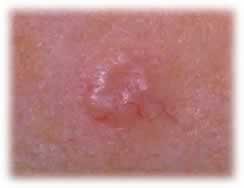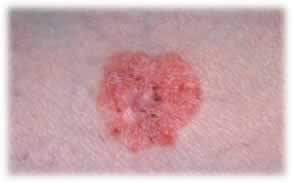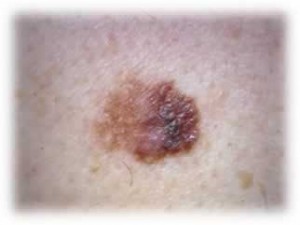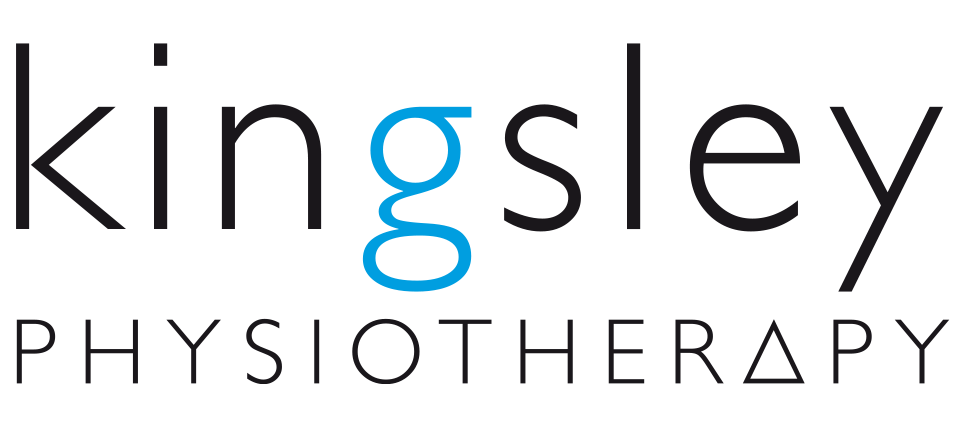Mole and skin cancer checks
Our harsh summer sun makes Australia the skin-cancer capital of the world. Annual head-to-toe skin checks are recommended for all adults and should be conducted by a Dermatologist or General Practitioner who specialises in skin cancer detection. This is an opportunity to have your skin assessed thoroughly and discuss the warning signs to look out for as your skin ages. This is an ideal opportunity to bring your partner to the consultation so that areas of the body that are more difficult to monitor yourself can be assessed and discussed. This enables you and your partner to perform regular ‘home-checks’ on each other and observe any evolving skin lesions.
The Facts & Numbers
2 in 3 – The number of Australians diagnosed with skin cancer by the time they are 70.
Over 400 000 people in Australia are treated each year for one or more non-melanoma skin cancer lesions.
There are three main types of skin cancer:
 Basal cell carcinoma (BCC) – The skin cancer you want to have if you are going to have one at all. It is the most common skin cancer accounting for approximately two thirds of skin cancers. They generally appear on sun exposed skin, are slow growing and can look like red, pink, pale, or pearly raised or flat spots. They tend to bleed easily, can fail to heal, and may ulcerate.
Basal cell carcinoma (BCC) – The skin cancer you want to have if you are going to have one at all. It is the most common skin cancer accounting for approximately two thirds of skin cancers. They generally appear on sun exposed skin, are slow growing and can look like red, pink, pale, or pearly raised or flat spots. They tend to bleed easily, can fail to heal, and may ulcerate.
 Squamous cell carcinoma (SCC) – Accounts for approximately one third of skin cancers. These carry a risk of spreading if left untreated for too long. They can look like non-healing sores, scaly, red or pink lesions, and are usually painful when touched.
Squamous cell carcinoma (SCC) – Accounts for approximately one third of skin cancers. These carry a risk of spreading if left untreated for too long. They can look like non-healing sores, scaly, red or pink lesions, and are usually painful when touched.
 Melanoma – the most dangerous form of skin cancer accounting for 1-2% of skin cancers but causing 75% of skin cancer deaths. In Australia, 1 in 14 men and 1 in 24 women will be diagnosed with melanoma sometime in their life. If melanoma is identified early, simple treatment can result in a complete cure.
Melanoma – the most dangerous form of skin cancer accounting for 1-2% of skin cancers but causing 75% of skin cancer deaths. In Australia, 1 in 14 men and 1 in 24 women will be diagnosed with melanoma sometime in their life. If melanoma is identified early, simple treatment can result in a complete cure.
What to expect at your appointment:
- You will be asked some questions about previous skin cancers, previous excisions, family history, occupation, level of sun exposure and frequency of sun protection.
- A thorough head to toe skin exam will take around 15 minutes with particular attention paid to sun exposed areas. This involves looking and sometimes palpating skin lesions for extra clues.
- A specialised device called a Dermatoscope may be used to look at skin lesions in more detail.
- Please try to attend your appointment without make-up so that your face can be thoroughly checked and ideally, remove nail varnish so that nails may be examined.
- You will be instructed on self-skin assessment. You will be guided on how to perform regular home self-checks and you will be instructed on which lesions need removal, biopsy or ongoing monitoring.
- Skin biopsy, cryotherapy, cautery or excision can be arranged following a complete skin check if suspicious lesions are found.
For further reliable information:
http://www.cancer.org.au/about-cancer/types-of-cancer/skin-cancer.html
https://www.melanoma.org.au/understanding-melanoma/what-is-melanoma/
For a full list of our fees and services click here.
To make an online booking with one of our doctors click here.





